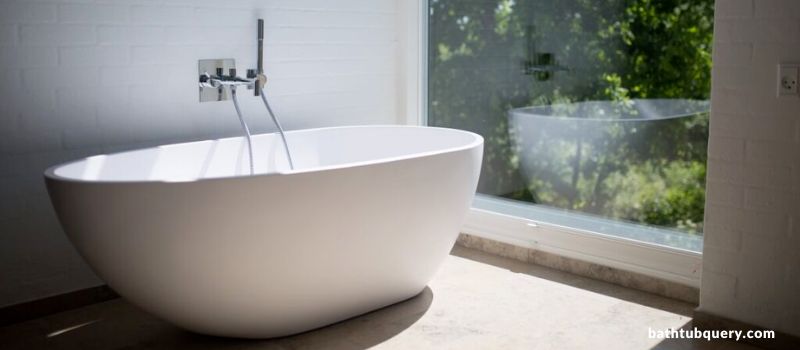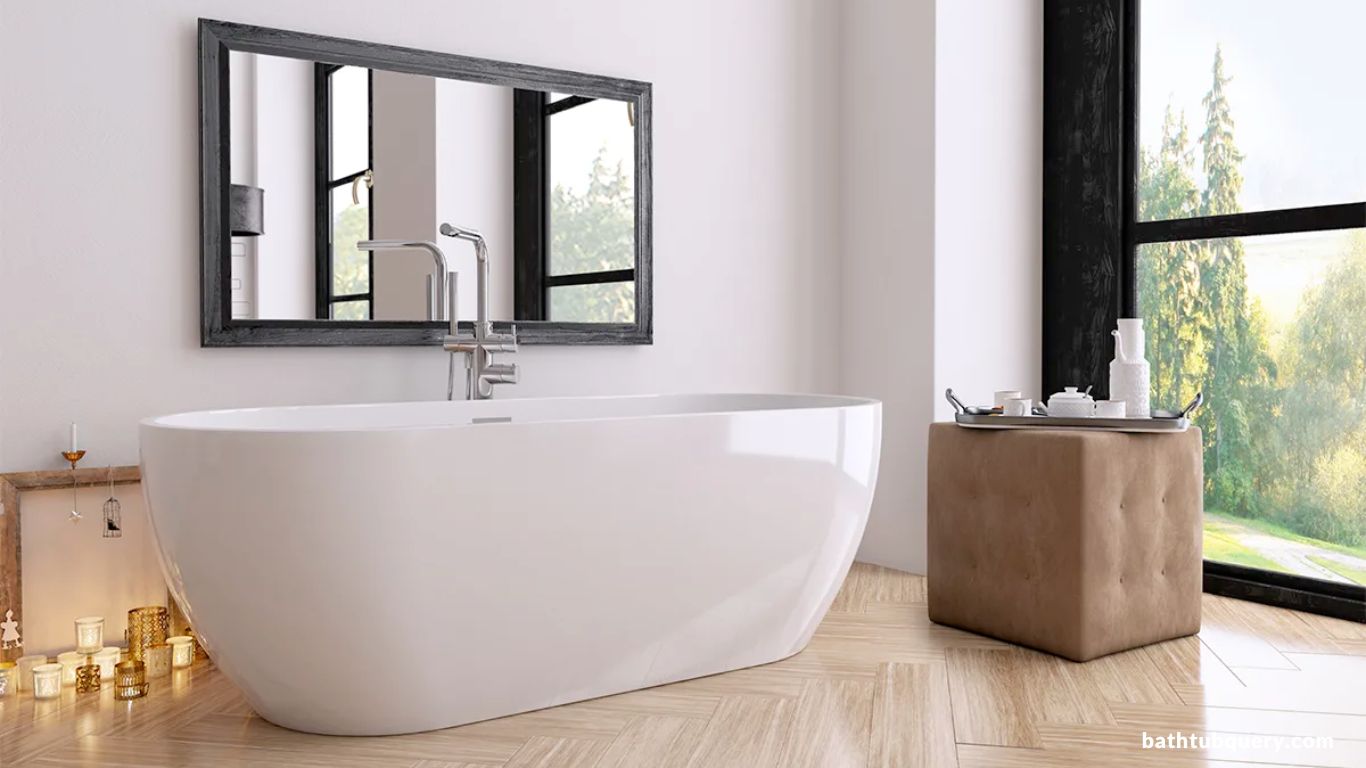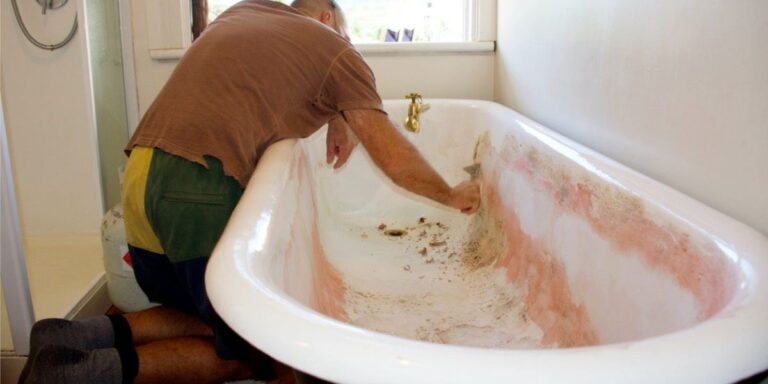Are Acrylic Bathtubs Good?
Acrylic has become a popular material for bathtubs thanks to its affordable price point and smooth, glossy look. But are acrylic tubs the right choice for your bathroom? Understanding the pros and cons helps determine if an acrylic tub will meet your needs or if you should consider alternatives.
What is an Acrylic Bathtub?
Acrylic bathtubs are made from sheets of acrylic that are reinforced with fiberglass and plastic and then molded into tub shapes. The acrylic plastic is the same material used for acrylic paints. Some key facts about acrylic tubs:
- Non-porous surface with a glossy, smooth finish
- Available in a wide range of shapes, sizes, and colors
- More affordable option compared to materials like porcelain
- Lightweight for easy maneuvering
- DIY friendly for self-installation
The acrylic sheets can be heated and thermoformed into different tub designs, from basic rectangles to unique curved shapes. This versatility and low cost have made acrylic a bathtub staple.
Are Acrylic Bathtubs Good?
Acrylic tubs offer decent heat retention at an affordable price point. The smooth acrylic surface keeps bath water warmer for longer compared to materials like porcelain. Acrylic is also lightweight for easy installation and comes in many color options.

While not as durable long-term as cast iron or stone tubs, acrylic provides good value if replaced every 10-15 years. With proper care, acrylic makes a solid bathtub choice for many homeowners.
Pros of Choosing an Acrylic Tub
There are many benefits that make acrylic an appealing choice for many homeowners:
- Durability: Acrylic tubs can last 10-15 years with proper care. The acrylic surface is resistant to chips and cracks.
- Easy to Clean: The non-porous acrylic surface prevents mold, mildew, and stains from building up and is easily cleaned.
- Stain and Scratch resistant: Acrylic resists stains better than materials like fiberglass and is fairly scratch resistant.
- Affordable: Acrylic tubs cost significantly less than premium options like cast iron or stone.
- Smooth and Comfortable: The glossy acrylic surface is smooth to the touch for a comfortable bathing experience.
- Heat Retention: Acrylic does a decent job retaining heat compared to materials like porcelain.
- Color Options: Acrylic tubs come in a wide range of color options besides just white.
- Lightweight: Weighing less than stone or cast iron, acrylic tubs are easier to maneuver and install.
- DIY Installation: Acrylic’s lightweight design and standard sizes make it a DIY friendly tub material.
Cons of Acrylic Bathtubs
However, there are some downsides to consider with acrylic tubs:
- Susceptible to Damage: Acrylic can chip, crack, or puncture if hit forcefully, requiring repairs.
- Prone to Scratching: Over time, acrylic will develop fine scratches from use and cleaning.
- Not as Durable: While durable, acrylic doesn’t last nearly as long as porcelain, iron, or stone tubs.
- Chemical Damage: Harsh cleaners, bath salts, and chemicals can cause acrylic tubs to yellow over time.
- Noise: Acrylic tubs transmit more echo and noise than other materials like cast iron.
- Limited Styles: Acrylic isn’t offered in high-end, ornate styles like clawfoot tubs.
- Heat Retention: While decent, acrylic does not retain heat as well as some other materials.
- Flexing: Acrylic may flex slightly over time, leading to an uneven tub surface.
While acrylic performs well in many areas, it has some inherent traits that affect its durability and longevity compared to higher-end tub materials.
Maintenance Tips for Acrylic Tubs
To get the most life out of an acrylic tub,
- Use non-abrasive bathroom cleaners only.
- Avoid harsh chemicals that can damage the surface.
- Clean frequently to prevent stains from building up.
- Inspect annually for any cracks forming.
- Apply a thin coat of automotive wax to create a protective barrier.
Table: Expected Lifespan by Bathtub Material
| Material | Average Lifespan |
|---|---|
| Acrylic/Fiberglass | 10-15 years |
| Porcelain Enamel Steel | 15-25 years |
| Cast Iron | 20+ years |
| Natural Stone | 25+ years |
With proper care and maintenance, an acrylic tub can provide over a decade of service life. But materials like porcelain, stone, and cast iron exceed acrylic’s longevity.
Alternatives to Acrylic Bathtubs
For those seeking a longer-lasting or more high-end tub, consider these alternatives:
- Porcelain Enamel steel: extremely durable with a glassy, glossy finish but heavy to install.
- Cast iron: Long-lasting, good heat retention, but very heavy.
- Stone Resin: A Natural stone look, but more affordable than real stone.
- Ceramic Tile: Highly customizible but requires more maintenance.
- Copper: striking appearance, but higher cost and upkeep required.
Acrylic provides an affordable, user-friendly option. But for a focal point tub with classic or luxury aesthetics, higher-end materials make sense despite their higher costs.
FAQs
How long do acrylic bathtubs last?
With proper care, acrylic bathtubs typically last 10-15 years before needing replacement. Porcelain and cast iron last longer.
Can you repair a chip in an acrylic tub?
Yes, chips and cracks in acrylic tubs can be repaired using epoxy resin fillers and DIY kits.
Are acrylic tubs better than fiberglass?
Acrylic tubs are more durable, stain-resistant, and scratch-resistant compared to fiberglass tubs.
Why is my acrylic tub turning yellow?
Chemicals, bath salts, and cleaning agents can cause acrylic tubs to yellow over time. Use gentle cleaners.
Do acrylic tubs hold heat well?
Acrylic retains heat better than materials like porcelain, but not as well as cast iron or stone.
Read more:
- Do Acrylic Bathtubs Need Insulation? Comprehensive Insight for Your Home Improvement
- Can You Put Tile Directly On A Bathtub?
- How To Turn A Bathtub Into A Planter?
- Do I Need A Baby Bathtub? Reasons You Need a Baby Tub Now

William J. Bullock is a licensed plumber with over 15 years of experience installing and repairing bathtubs. He runs his own plumbing company in Greenville and serves residential and commercial clients. William is dedicated to providing honest, transparent advice to help homeowners make informed decisions about their bathroom renovations.
He has established expertise in selecting bathtubs, planning custom installations, diagnosing issues, and completing repairs. William aims to share practical tips and reliable recommendations based on extensive hands-on work. When he isn’t on a job site, William enjoys spending time with his family and volunteering at local community events. He takes pride in delivering quality service and enjoys helping people upgrade their homes.







